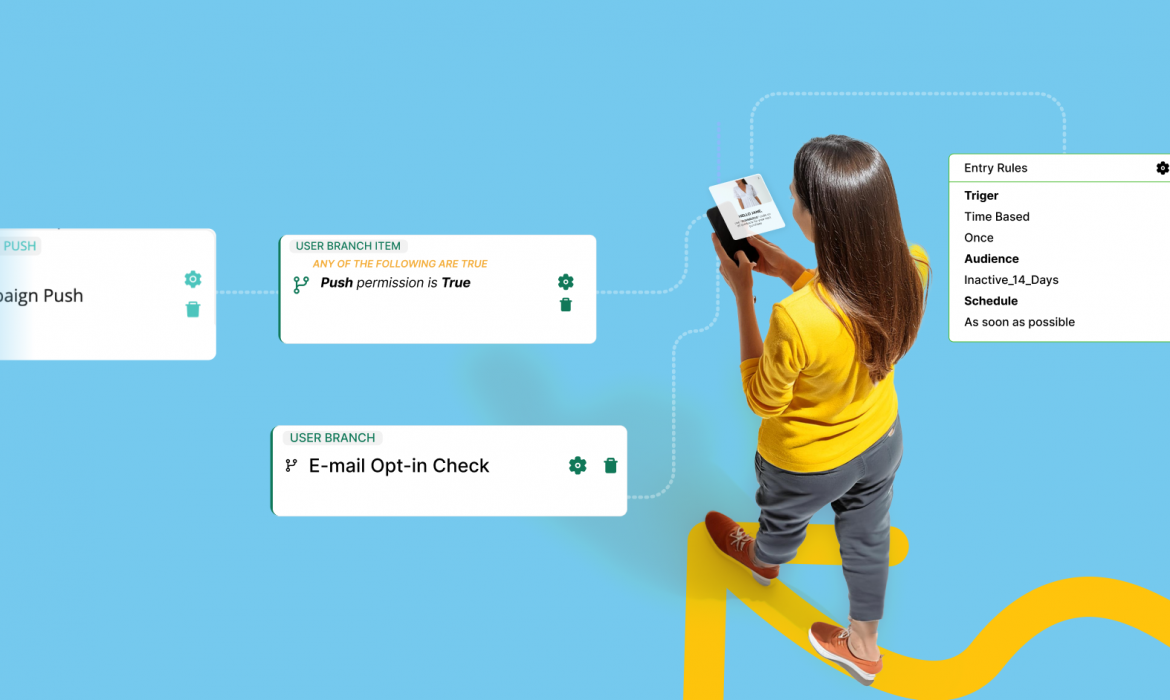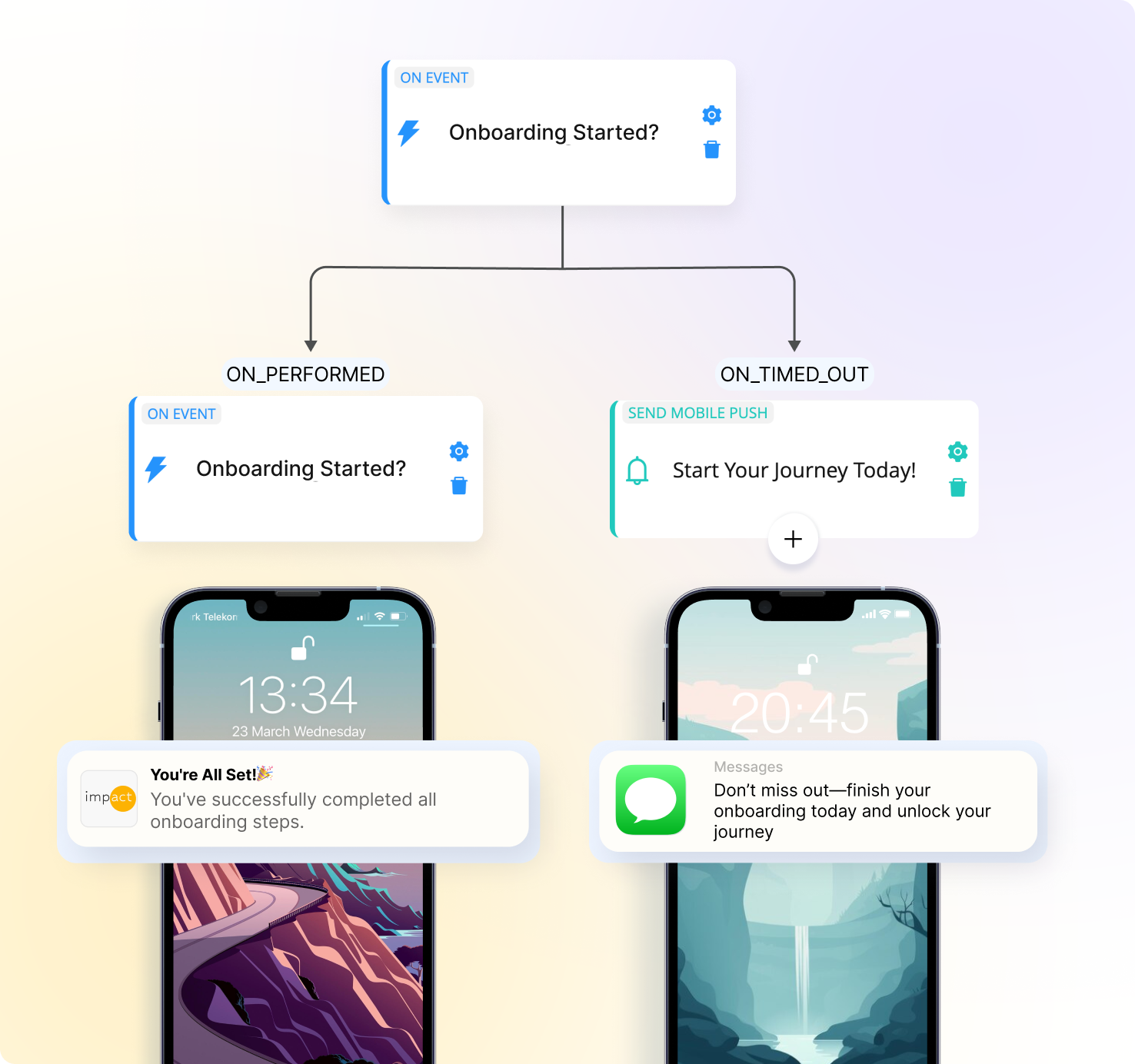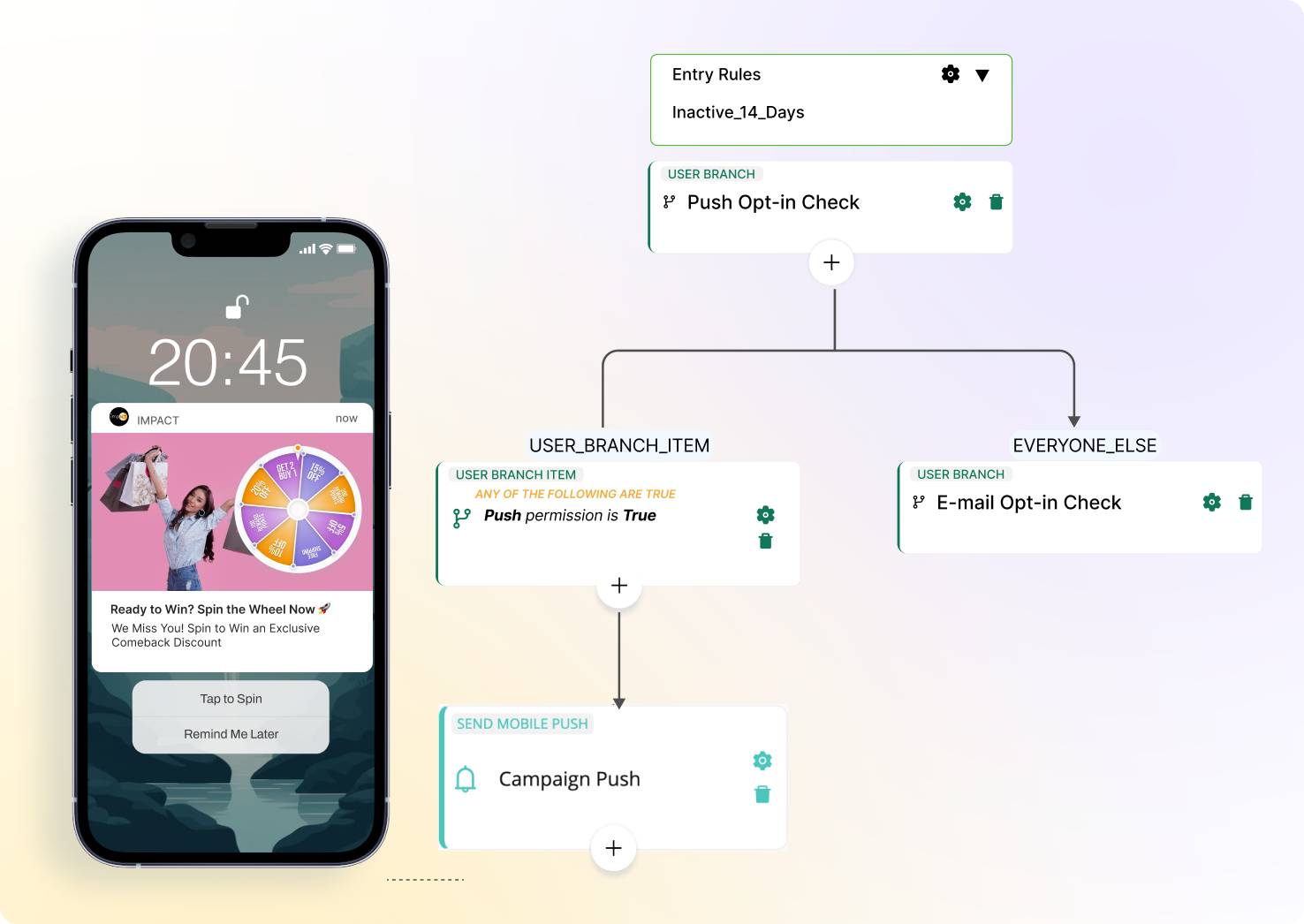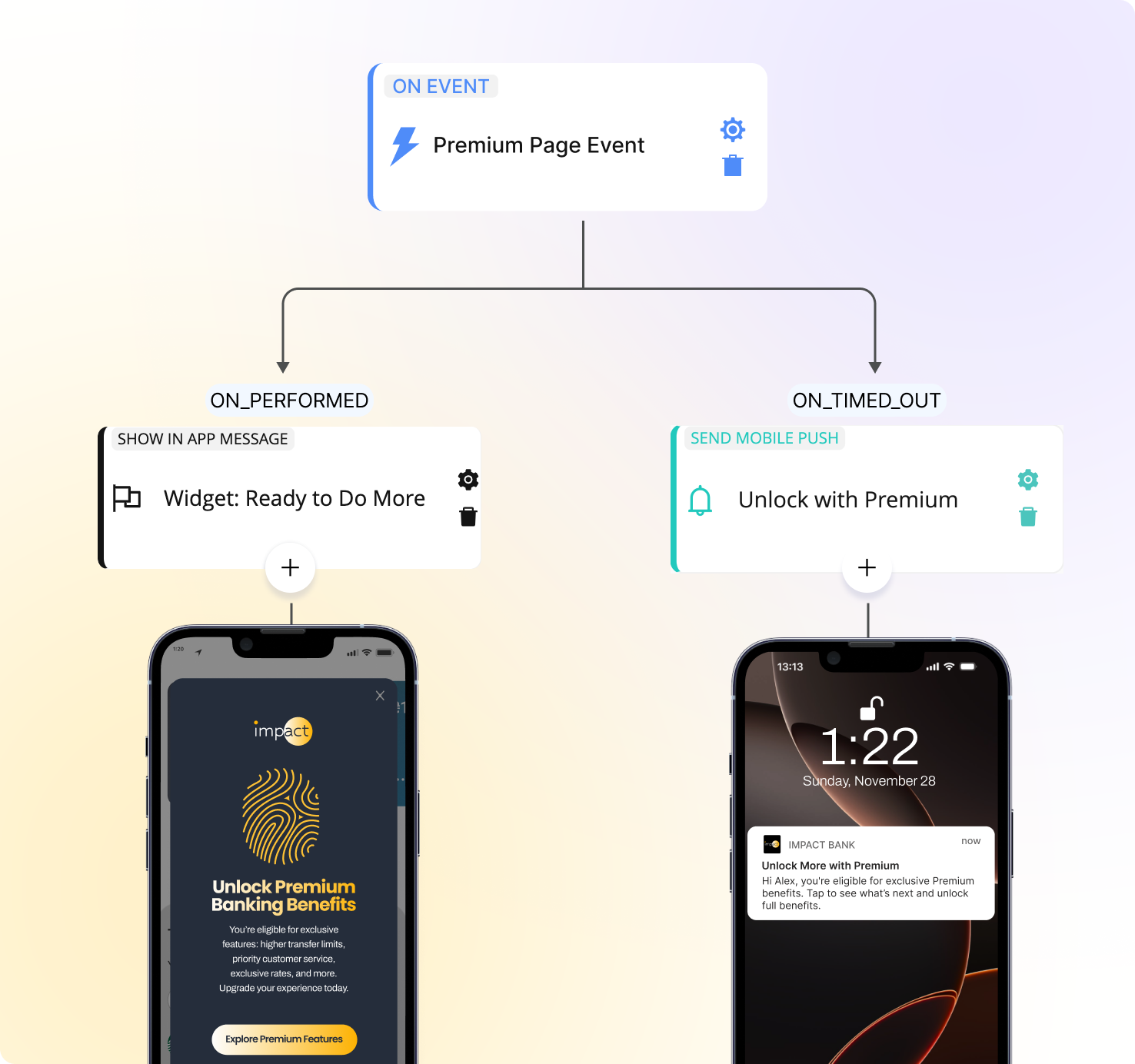
Boost Engagement and Conversions with Customer Journeys
In today’s digital-first world, brands don’t just compete on products or services—they compete on customer experience. Every touchpoint matters, and customers expect brands to understand their needs, respond in real time, and guide them toward meaningful actions. That’s where customer journeys come into play.
A customer journey is more than just a series of messages—it’s a carefully designed experience that adapts to user behavior, context, and preferences across channels. When done right, it transforms casual users into loyal customers.
In this blog, we’ll walk through three powerful use cases that show how customer journeys can make a real difference:
Onboarding new users and turning them into active customers
Bringing back inactive users with gamified re-engagement
Converting intent into revenue with personalized premium flows
1. Onboarding: Turning New Users Into Active Customers
The first impression matters. When a user downloads an app, the first hours and days determine whether they stick around or churn. Research shows that most apps lose the majority of their users within the first week. That’s why a well-crafted onboarding journey is critical.
Imagine a new user opening your app for the first time. Instead of leaving them to figure things out, the journey welcomes them with contextual, value-driven guidance.
In finance apps, users might receive reminders about completing identity verification (KYC) to unlock key features.
In e-commerce apps, a first-purchase discount can motivate immediate engagement.
In media platforms, personalized content suggestions create instant relevance.
The onboarding journey doesn’t just stop at the welcome. If users pause halfway, the system detects it and gently nudges them with messages like, “Just one more step to go!” If they complete onboarding, they’re celebrated with a warm “Welcome” notification—an important psychological cue that reinforces their decision.
And if they abandon the flow entirely? Instead of being lost, they’re tagged as “likely to churn” and targeted later with win-back campaigns.
The result: higher completion rates for critical actions such as account verification, first purchases, or premium activation. More importantly, users feel guided, valued, and connected from day one.

2. Bringing Back Inactive Users With Gamified Re-Engagement
Even the most successful apps face the challenge of user inactivity. Customers get distracted, switch devices, or simply forget. The real test is not avoiding inactivity—it’s how you win users back.
Consider an e-commerce journey designed to re-engage users who have been inactive for 14 days. Instead of sending a generic reminder, the journey uses personalized and gamified experiences to reignite interest.
Here’s how it works:
Multi-channel strategy – The journey adapts to user permissions. Push notifications are the first channel if users are opted in. Otherwise, email or SMS takes the lead. No user is left behind.
Playful messaging – Inactive users receive a fun message: “We miss you—spin to win an exclusive comeback discount.” This creates curiosity and lowers the barrier to re-engagement.
Gamified experience – The user is directed to a spin-to-win widget that offers a surprise, such as 25% off. The element of chance makes the experience exciting and rewarding.
Smart follow-ups – If the user doesn’t convert immediately, the system sends reminders like, “Still thinking it over? Your discount expires soon.”
A/B testing and optimization – Users are split between SMS and email reminders, ensuring the best-performing channel gets more weight in the future.
What makes this journey powerful is its adaptability. Whether through push, SMS, email, or in-app messages, the user is guided back with a mix of urgency, personalization, and playfulness. The outcome? Higher reactivation rates and stronger brand recall.

3. Converting Intent Into Revenue
Sometimes, users already show interest—they browse premium pages, explore upgrades, or check out high-value services. But intent alone doesn’t equal revenue. Without a well-timed nudge, that interest may fade away.
This is where conversion-focused journeys step in.
Picture this: A high-value user visits your premium page. Instantly, the system triggers a personalized flow designed to maximize conversion without being intrusive.
Immediate engagement – If the user has already viewed the premium page, they see an in-app widget showcasing exclusive offers. After a short delay, a push notification reinforces the message.
Dynamic paths – If the user hasn’t seen the premium page before, an alternative path is activated with a push titled “Unlock with Premium.” This educates and intrigues the user.
Multi-channel orchestration – Depending on user actions, the journey leverages in-app notifications, push, SMS, and email. Each channel complements the others, ensuring the message gets through.
Conversion checks – At every stage, the system verifies if the user has upgraded. If yes, they receive celebratory messages that reinforce their decision. If not, they’re nurtured further with additional reminders.
This approach blends behavioral triggers, timing, and personalization into one seamless flow. It doesn’t overwhelm the user but strategically guides them toward upgrading. The result is not just higher revenue—it’s a smoother, more satisfying customer experience.

The Bigger Picture
These three use cases highlight a key truth: customer journeys are not about sending more messages; they’re about sending the right message at the right time.
Onboarding journeys build strong first impressions.
Re-engagement journeys revive dormant users with creativity.
Conversion journeys turn intent into measurable business growth.
The power lies in flexibility—whether through push, in-app, SMS, or email—and in adapting to each user’s behavior.
For brands, the impact is clear: higher conversions, stronger loyalty, and better long-term retention. For customers, it means experiences that feel less like marketing and more like meaningful conversations.
Final Thoughts
Every user is on a journey. The question is whether your brand is walking alongside them. With well-designed customer journeys, you don’t just react to behavior—you anticipate it, shape it, and create lasting value.
Whether you’re onboarding new users, winning back the inactive ones, or converting intent into revenue, journeys give you the framework to deliver experiences that matter.
In the end, it’s not about technology—it’s about building relationships. And customer journeys are where those relationships truly begin.
To learn more about how to design impactful journeys, visit this page.
